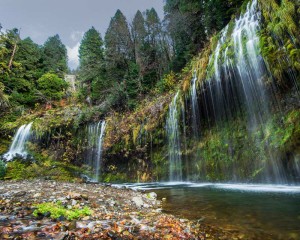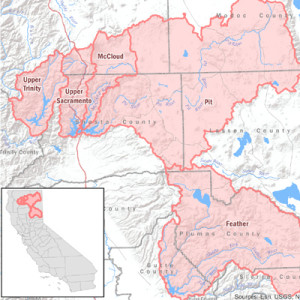
Spring 2016 Leaflet
POLICY
Promoting Water Security, Naturally
 California’s population is projected to hit 50 million by 2050, increasing demand for an already scarce resource—cool, clean water. This increased demand in a warmer and drier state dramatically highlights the critical need to improve the reliability of our primary water supply. To help address this, Pacific Forest Trust is working closely with California Assemblymember Richard Bloom on his pioneering legislation, AB 2480, which recognizes source watersheds as infrastructure and a critical component of the state’s water system. AB 2480 also calls for a prioritized and comprehensive investment plan to restore and conserve key watersheds.
California’s population is projected to hit 50 million by 2050, increasing demand for an already scarce resource—cool, clean water. This increased demand in a warmer and drier state dramatically highlights the critical need to improve the reliability of our primary water supply. To help address this, Pacific Forest Trust is working closely with California Assemblymember Richard Bloom on his pioneering legislation, AB 2480, which recognizes source watersheds as infrastructure and a critical component of the state’s water system. AB 2480 also calls for a prioritized and comprehensive investment plan to restore and conserve key watersheds.
 Just five source watersheds in northern California provide 80 percent of the state’s reservoir capacity, supplying drinking water for over 25 million people, irrigation water to 8 million acres, and over 80 percent of the freshwater for the San Francisco Bay. These watersheds collect, treat, store, and transport water that fills our reservoirs. California has policies and systems in place that maintain our built water infrastructure such as dams, levees, and canals. However, the state has no policies or systems for ensuring the function of our natural water infrastructure, the source watersheds which are essential for dams to function.
Just five source watersheds in northern California provide 80 percent of the state’s reservoir capacity, supplying drinking water for over 25 million people, irrigation water to 8 million acres, and over 80 percent of the freshwater for the San Francisco Bay. These watersheds collect, treat, store, and transport water that fills our reservoirs. California has policies and systems in place that maintain our built water infrastructure such as dams, levees, and canals. However, the state has no policies or systems for ensuring the function of our natural water infrastructure, the source watersheds which are essential for dams to function.
These primary source watersheds are in sub-optimal condition and increasingly threatened by climate change, fragmentation, and other stressors that reduce watershed function. Fortunately, this is a reversible trend. It is well documented that watershed restoration and conservation can increase water quality and quantity, as well as improve flow regulation—both reducing peak flooding and holding water later into summer seasons.
AB 2480 is the first step in putting together a comprehensive system to reduce these risks and promote water security and adaptation under climate change. Watershed conservation is one of the most cost-effective things we can do for greater water security, quantity, and quality—a complementary and least cost approach to other water treatment and development.
Without these source watersheds, our dams cannot provide the water we rely on. The northern California region in which they are found is projected to remain far cooler and wetter than the rest of the state under climate change. As a result, our dependence on these source watersheds is likely to increase. Just like dams, levees, and canals, natural watershed infrastructure needs repair and maintenance. Now is the time to make a focused investment to ensure its restoration and protection, building climate resilience and enhancing our water security.
